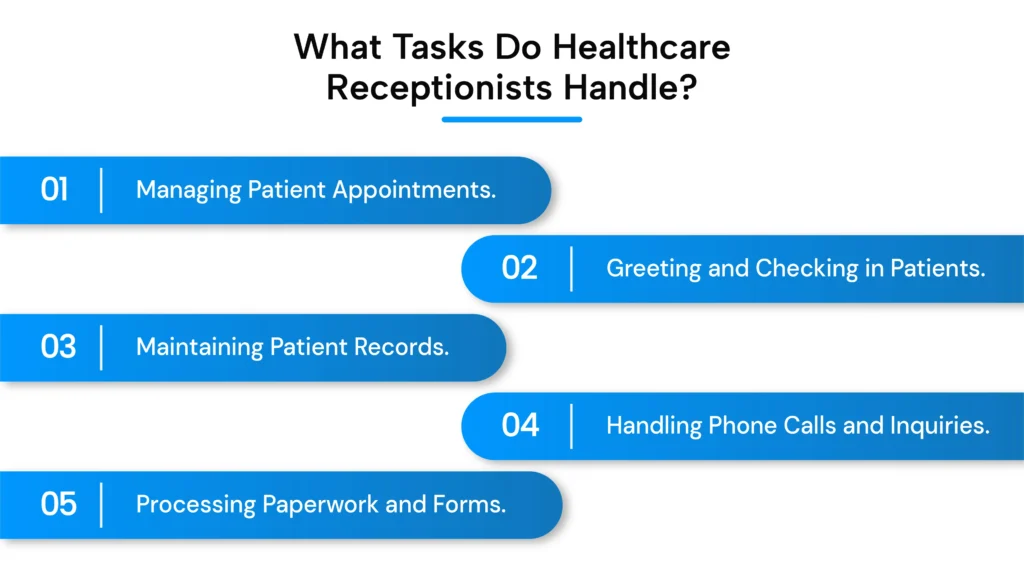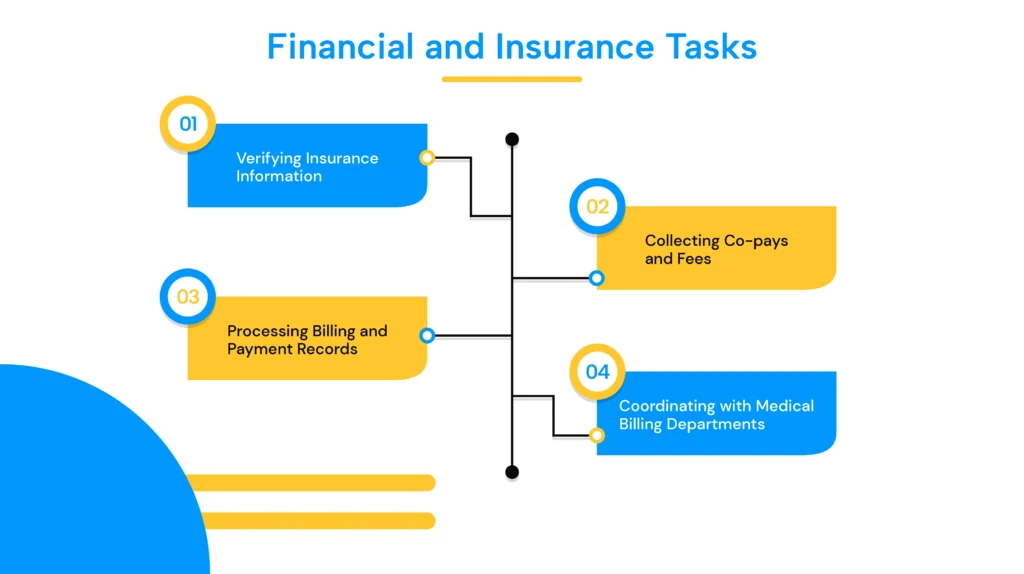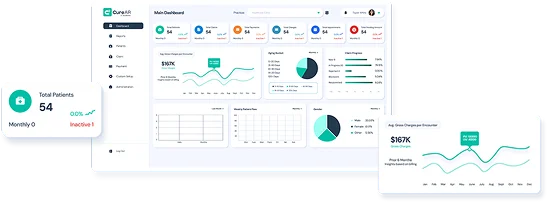Have you ever wondered who keeps a busy medical office organized? A medical receptionist does this job. They greet patients, manage appointments, and make sure each visit goes as planned. Their role may seem simple, but they are the link between patients and providers, making sure communication flows and the office operates without unnecessary delays.
Today, the responsibilities of a healthcare receptionist extend beyond scheduling and paperwork. With digital tools, online booking systems, and virtual consultations becoming more common, they help practices stay efficient, responsive, and focused on providing a positive patient experience in a rapidly evolving healthcare environment.
Understanding the Role of a Medical Receptionist
A medical receptionist does much more than greet patients at the clinic. They manage daily schedules, organize patient records, and coordinate office tasks to keep the practice running efficiently. By handling administrative duties carefully, they reduce mistakes, save valuable time for doctors and staff, and help patients have a smoother visit.
Receptionists serve as the link between patients and healthcare providers. They share updates, pass along important messages, and make sure patient information is accurate and easy to access. In addition to scheduling and recordkeeping, they often assist with billing, insurance checks, and other financial tasks, supporting the practice behind the scenes.
As healthcare increasingly relies on technology, receptionists now work with electronic health records, online booking systems, and secure messaging platforms. Their ability to combine traditional responsibilities with digital tools makes them an important part of the office, ensuring patients and providers have the information and support needed to focus on quality care.

What Tasks Do Medical Receptionists Handle?
Medical receptionists manage tasks that directly affect both patient experience and office efficiency. Their responsibilities are much more than answering phones; they handle appointments, keep records, communicate with patients, and manage paperwork using everyday tools.
1: Managing Patient Appointments
Receptionists schedule, confirm, and adjust appointments so doctors and patients stay on track. They often use computer calendars or online booking systems to send reminders and reduce missed appointments. Effective appointment management ensures that patients are seen on time, follow-up visits are planned properly, and emergency slots are available when needed.
2: Greeting and Checking in Patients
Receptionists greet patients as they enter the clinic with a friendly and professional attitude. They make eye contact, smile, and acknowledge each patient by name, which helps patients feel valued and at ease. After the greeting, they verify personal and insurance details to make sure records are accurate and up to date.
This step is important because the first interaction sets the tone for the entire visit. A warm and organized check-in reduces stress, builds trust, and helps patients feel confident in the care they will receive. It also ensures that the administrative side of the visit, like insurance verification and consent forms, is handled correctly, preventing delays later in the appointment.
3: Maintaining Patient Records
Receptionists keep patient information accurate and up to date. They add new details, update medical history, and verify insurance data so doctors can focus on care without interruptions. Accurate records also prevent delays in billing and insurance processing, helping the office operate without unnecessary hold-ups.
Many clinics use digital systems or electronic health records (EHR), allowing receptionists to quickly access and update information while sharing it securely with the medical team. By keeping records organized and precise, receptionists support timely care and help each patient visit be simpler and less stressful.
4: Handling Phone Calls and Inquiries
Receptionists handle calls and messages from patients, pharmacies, and other healthcare providers. They answer questions about appointments, explain insurance details, and guide patients through clinic procedures. Clear and friendly communication helps patients feel confident and reduces confusion.
Many clinics now use phone systems, secure messaging apps, or patient portals to keep communications organized. Receptionists track inquiries, follow up as needed, and make sure the right information reaches doctors and staff. This keeps everyone informed and allows patient care to continue smoothly without interruptions.
5: Processing Paperwork and Forms
Receptionists manage a variety of documents, including insurance forms, consent forms, and other necessary paperwork. They check that all information is accurate, properly filled out, and stored safely. Organized paperwork helps avoid mistakes and keeps the office running without delays.
They also coordinate with staff to make sure forms reach the right departments and are processed on time. Handling these administrative tasks carefully ensures that patient visits and billing are smooth and uninterrupted.

Financial and Insurance Tasks
Medical receptionists handle key financial and insurance responsibilities that keep a healthcare practice running efficiently. The sections below explain how they verify insurance, collect payments, manage billing records, and coordinate with billing teams, ensuring smooth operations for both patients and providers.
1: Verifying Insurance Information
Before a patient’s appointment, receptionists check their insurance plan. They confirm what the plan covers, the co-pays, and any eligibility details. Many offices use online insurance portals to verify this information. Keeping insurance details up to date prevents billing mistakes and delays in the future.
2: Collecting Co-pays and Fees
Receptionists handle payments when patients come in for their appointments. They check what fees are due, explain any costs the patient is responsible for, and accept payment through cash, card, or digital methods. Every transaction is carefully recorded so the office has accurate financial records. This process keeps billing clear, avoids mistakes, and helps the clinic run without interruptions.
3: Processing Billing and Payment Records
Receptionists record all patient payments in the clinic’s billing system and keep track of unpaid balances. They also prepare insurance claims and check that every charge is accurate. This careful management reduces errors, prevents delays in payment, and keeps the office financially organized.
Many clinics now use digital billing tools or electronic health records. These systems allow receptionists to update records quickly, maintain accurate financial data, and ensure that reimbursements and patient payments are processed correctly. Practices that choose to outsource medical billing can further improve accuracy and reduce the administrative burden on front-desk staff, allowing the office to focus more on patient care.
4: Coordinating with Medical Billing Departments
Receptionists act as a link between the front desk and the billing team. They provide documentation for claims, resolve discrepancies, and confirm that submissions meet insurance requirements.
Regular communication with billing staff helps avoid delays, ensures claims are processed correctly, and maintains a steady revenue flow. By coordinating effectively, receptionists support the practice’s financial stability while allowing healthcare providers to focus on patient care.
The Future of the Medical Receptionist Role
The responsibilities of receptionists are changing as healthcare practices adopt new technology and respond to patient needs. Today, their work goes beyond greeting patients and managing schedules. They support digital systems, assist with billing, and collaborate closely with clinical teams to keep the office organized and patients informed.
Digital Transformation and Automation
Receptionists now rely on electronic health records, online scheduling platforms, and secure communication tools. These systems help them manage patient information, track appointments, and update billing records with accuracy. By using digital tools, receptionists can reduce errors, save time, and allow doctors and staff to focus on patient care.
Remote Receptionist Roles in Telehealth
Telehealth has changed how patients connect with healthcare providers, and receptionists have adapted along with it. A virtual medical receptionist now manages virtual check-ins, confirms online appointments, and provides guidance to patients before their telehealth visits. They also help patients use video platforms, troubleshoot login issues, and answer basic questions about procedures or forms.
Beyond helping patients, remote receptionists work closely with doctors and nurses to make sure all patient information is accurate before appointments. They also manage follow-ups, send reminders, and handle basic billing tasks from a distance. By managing these responsibilities, remote receptionists help clinics stay organized and provide care that feels personal, even when staff aren’t physically in the office.
Final Thoughts
Medical Receptionists influence how your practice operates and how patients experience care. From greeting patients and managing appointments to maintaining accurate records and supporting billing, their work affects every part of the office. In today’s digital world, they also adapt to online scheduling, electronic health records, and telehealth, helping patients and providers stay connected.
By handling these responsibilities carefully and professionally, receptionists allow doctors and staff to focus on patient care without distractions. Whether on-site or working remotely, they make the patient experience organized, clear, and more comfortable. Investing in skilled reception staff is an investment in the overall efficiency and reputation of any medical practice.
FAQs
- What does a medical receptionist do?
A medical receptionist greets patients, schedules and manages appointments, keeps records updated, handles phone calls, and supports billing and insurance tasks. They help the office run smoothly and make visits easier for patients.
- Why are medical receptionists important?
They connect patients with doctors and staff, making sure information is clear and appointments stay on track. Their work keeps the clinic organized and helps patients feel welcome.
- Do receptionists handle billing?
Yes, they check insurance coverage, collect co-pays, record payments, and coordinate with billing staff to avoid mistakes and delays.
- How has technology changed their role?
Receptionists now use electronic health records, online booking systems, and secure messaging tools. Many also help with telehealth appointments and virtual patient check-ins.
- What skills make a medical receptionist effective?
Good communication, attention to detail, organization, and comfort with digital tools are key to keeping both patients and the office running smoothly.



![Cost of Hiring Virtual Medical Assistants in the USA [2026] Blog Banner](https://doctorpapers.com/wp-content/uploads/2025/12/Cost-of-Hiring-Virtual-Medical-Assistants-in-the-USA-2026-300x152.webp)



